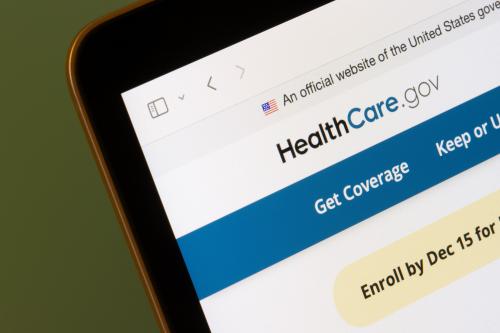Because health is a human right, every effort to improve the health of the population of metropolitan New Orleans must be pursued.1 A healthy population also will add to the region’s capacity for resilience. In 2005, when Hurricane Katrina and the failure of the federal levees devastated the region, Louisiana was 49th out of 50 states in national health rankings.2 In 2024, Louisiana was ranked as the unhealthiest state in the nation.3
The health profile of the residents of the New Orleans metropolitan area is usually somewhere in the middle compared to other parishes in Louisiana. In 2005, for example, men in Orleans Parish lived 65.9 years on average, while life expectancy among women in was 74.6 years. Life expectancy among men in Louisiana in 2005 was 70.8 years, while the average life expectancy of women in Louisiana was 76.9 years.4
Prior to the COVID-19 pandemic in 2020-2023, life expectancy was increasing. Life expectancy in Louisiana was 76.1 years in 2019 and 77 years in Orleans Parish, though based on the most recent data, life expectancy decreased to 73 years.5 The consequences of the COVID-19 pandemic notwithstanding, some health outcomes have improved over time for residents in the New Orleans metropolitan region.6
Overall mortality rates, for example, have decreased, as have infant mortality rates.7 Yet there is variability within the region. In Orleans Parish, which includes the city of New Orleans, 12.4 percent of babies are born with low birthweight.8 Yet, fewer babies are born with low birthweights in Jefferson Parish, south and west of the city, at 10.1 percent, and in St. Tammany Parish, north of the city on the shores of Lake Pontchartrain, at 8.5 percent.9
Deaths from heart disease, cancer, and HIV have decreased over time in metropolitan New Orleans in alignment with national trends.10 In 2006, there were 193 new cases of HIV in New Orleans metropolitan area.11 Yet, there were 125 new HIV diagnoses in Orleans Parish in 2022.12 Opioid overdose deaths and deaths by suicide have also increased over time among the residents of the region, similar to U.S. trends overall.13 Rates of diabetes, obesity, and frequent mental distress also have increased over time in New Orleans.14
Though there have been some improvements to the health of the regional population in the years since Hurricane Katrina, addressing the root causes of the health profile of metropolitan New Orleans is key. The social determinants of health are defined as “the conditions in which people are born, grow, live, work and age, and people’s access to power, money, and resources,” according to the World Health Organization.15 To improve the health of the population in the New Orleans metropolitan area and to increase its residents’ capacity for resilience, improving and closing inequities in the social determinants of health in the region is required.
This report will frame health as the capacity for resilience, by first describing the health impacts of negative shocks on the residents of metropolitan New Orleans, then examining the racial inequities in health and the social determinants of health among the residents of the region. Then, building on the collaborative approaches developed before, but especially after, Hurricane Katrina to increase residents’ capacity for resilience and improve the social determinants of health, this report will close with a set of broad recommendations. Among them:
- Continue to create formal positions and efforts within public health institutions dedicated to building health as a capacity for resilience
- Continue to identify and recruit community-based organizations currently conducting work to overcome negative social determinants of health
- Prioritize preparation for negative shocks to the region for low-income residents, those with disabilities, the elderly, and people with chronic conditions
Policymakers and community leaders alike can advocate for support of these and other efforts with sustainable funding to establish community-driven and culturally rooted efforts to create stronger health-resilience capacities that can be a model for the rest of the United States.
Read more
This report is part of a series from Brookings Metro and The Data Center examining the New Orleans metro area across key policy areas including housing, community safety, and flood adaptation. The series provides local leaders with tools to mitigate future disaster risks for the most vulnerable communities.
-
Footnotes
- World Health Organization. 2006. “Constitution of the World Health Organization.” Available at: https://apps.who.int/gb/bd/pdf/bd47/en/constitution-en.pdf.
- WAFB. 2005. “New 2005 State Health Rankings.” WAFB. December 12, 2005. Available at: https://www.wafb.com/story/4235128/new-2005-state-health-rankings/.
- United Health Foundation. 2025. “America’s Health Rankings: 2024 Annual Report.” Available at: https://assets.americashealthrankings.org/allstatesummaries-ahr24.pdf.
- Institute for Health Metrics and Evaluation, Global Health Data Exchange. 2022. United States Adult Life Expectancy by State and County 1987–2009. Available at: https://ghdx.healthdata. org/record/united-states-adult-life-expectancy-state-and-county-1987-2009.
- University of Wisconsin Population Health Institute. County Health Rankings & Roadmaps 2025. Available at: https://www. countyhealthrankings.org/health-data/population-health-and-well-being/length-of-life/life-span/life-expectancy?year=2025&coun ty=22071
- City Health Dashboard. “New Orleans—Overview Metrics.” New Orleans Health Department Available at: https://www.cityhealthdashboard.com/LA/New%20Orleans/city-overview.
- City Health Dashboard. “New Orleans—Overview Metrics.” New Orleans Health Department Available at: https://www.cityhealthdashboard.com/LA/New%20Orleans/city-overview. See also The Data Center. “Placing Prosperity. Chapter 1: Unpacking Neighborhood Differences in Life Expectancy.” Available at: https:// www.datacenterresearch.org/placing-prosperity/chapter-1.html.
- Annie E. Casey Foundation. “Louisiana”: Kids Count Data Center. Available at: https://datacenter.aecf.org/data/tables/1546- low-birth-weight-babies?loc=20&loct=5#detailed/2/any/false/2545,1095,2048,574,1729,37,871,870,573,869/any/7819,7818
- March of Dimes. 2024. “2024 March of Dimes Report Card for Louisiana.” Available at: https://www.marchofdimes.org/peristats/ reports/louisiana/report-card.
- The Data Center. “Placing Prosperity. Chapter 1: Unpacking Neighborhood Differences in Life Expectancy.” Available at: https:// www.datacenterresearch.org/placing-prosperity/chapter-1.html.
- Louisiana Department of Health. 2007. “LOUISIANA HIV/AIDS ANNUAL REPORT AND EPIDEMIOLOGIC PROFILE.” Available at: https://ldh.la.gov/assets/oph/HIVSTD/hiv-aids/Annual_ Reports/2005-06AnnualReport.pdf.
- Louisiana Department of Health. 2022. “2022 HIV Supplemental Report.” Available at: https://ldh.la.gov/assets/oph/HIVSTD/HIV_ Syphilis_Quarterly_Reports/HIV-Supplemental-Report_2022_Final.pdf.
- The Data Center. “Placing Prosperity. Chapter 1: Unpacking Neighborhood Differences in Life Expectancy.” Available at: https:// www.datacenterresearch.org/placing-prosperity/chapter-1.html.
- City Health Dashboard. “New Orleans—Overview Metrics.” New Orleans Health Department Available at: https://www. cityhealthdashboard.com/LA/New%20Orleans/city-overview. See also New Orleans Health Department. “Healthy Lifestyles in New Orleans.” Available at: https://nola.gov/nola/media/Health- Department/Publications/Healthy-Lifestyles-in-New-Orleans- Community-Health-Data-Profile-final.pdf.
- World Health Organization. 2022. “Social Determinants of Health.” Available at: https://www.who.int/health-topics/social-determinants-of-health#tab=tab_1.
The Brookings Institution is committed to quality, independence, and impact.
We are supported by a diverse array of funders. In line with our values and policies, each Brookings publication represents the sole views of its author(s).




